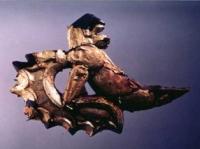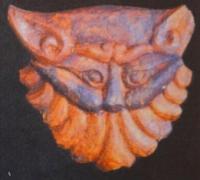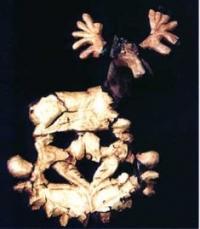You are here
Ancient nomads of Altai Kazakhstan.




Hideaway in Kazakhstan.
“Why do you go away? So that you can come back. So that you can see the place you came from with new eyes and extra colors. And the people there see you differently, too. Coming back to where you started is not the same as never leaving”
Terry Pratchett. “A Hat Full of Sky”.
Coach tour from Ust-Kamenogorsk to Semey.
A picturesque valley in the foothills of the ancient Altai mountains, slopes covered with century-old woods, birch and fir trees, cristal clear rushing streams of glacier water, that is the scenery of Berel, right in the Kazakh border area with Russia, Mongolia, China.
Lush green pastures make this ideal nomade country and indeed, this is where the Eurasian Nomades of the Great Steppes dwelled, roamed and temporarily settled. Apart from its natural beauty, this is one of the exciting and revealing archaeological sites in the world where some of the most prestigious international excavations have been ndertaken, so for example in 1998 - 1999 the joint expedition of the French Mission Archéologique en Asie Centrale (Paris-Nanterre) and the Kazahk Margulan Institute of Archaeology (Almaty) together with the Italian Ligabue Foundation, Ghent University Belgium and the Russian Institute of Archaeology and Ethnography in Novosibirsk, all under the director Henri-Paul Francfort.
Ghent University was represented by Ignace Bourgeois who, together with his French colleague, managed the excavation. You may remember a previous article about the history of the Tatars and how part of their origine is in the Ural-Altay region, from where they joined migrating mongols on their journey westward, where they intermarried with peoples settled along this long and winding road.
The Skyth too are from Altai, with their breathtakingly beautiful golden burial treasures. So are the legendary amazone warriors, beautiful and strong women, who set out from here to conquer and defend.
What can be visited today in Berel are the barrows, the huge and complex burial sites of these very ancient nomades, where their chiefs were put to rest for their transition to heavenly pastures.
The existance of more than 30 such barrows, arranged in a long chain, make Berel so important for archaeologists and anthropologists.
The largest of these mounds, the one discovered by the joint expedition, is 2000 years old and revealed a king and queen and 13 completely harnessed horses, the harnesses consisting of an array of small sculptured wooden ornaments (mostly animals and floral motifs) often combined with leather and covered with gold and silver foliage.
Other remarkable artefacts were numerous saddles made of tissue, felt, hide and leather. Several horses were adorned with their very own themed decoration such as the tiger, elk or snow leopard motive. The excellent preservation of the animals allowed to take samples of their skin, hair, muscles, and other body parts for DNA analysis.
Let us step back in time and look closer at the context of the objects unearthed at Berel's main site. The chief of a tribe, if he was strong and smart, guaranteed the tribe's survival. His strict rules, imposed disciplin, his smart decisions were vital to hold the clan together, to assure social harmony, to keep movements organized, to get to the right pastures in time, to structure the tribe's defence against attackers. Consequently, the loss of a chief meant impending chaos.
Burials were sacred rites in strict successions, the provision of specific objects such as clothing, utensils, precious gifts and animals, which would facilitate the journey to the heavens. Once the chief was properly escorted to the next world, harmonious grounds were prepared for his successor to take over the reign.
It was considered that in the upper world the ruler would maintain his regal status, his power and his immortality eternally. His corporal shell thus had to be preserved by all means. For this purpose the dead chief was embalmed.
The burrows were ingenious constructions, built in such a way that in their innermost chambers, conditions of permafrost prevailed. This is where the embalmed body was laid out. Thus, the "frozen graves" make it possible for us to understand aspects of life thousands of years back, the traditions, religious believes, the culture of those who could in all probability be our ancestors too.
Authority:
http://www.discovery-central-asia.com
Photos by
Alexander Petrov.







